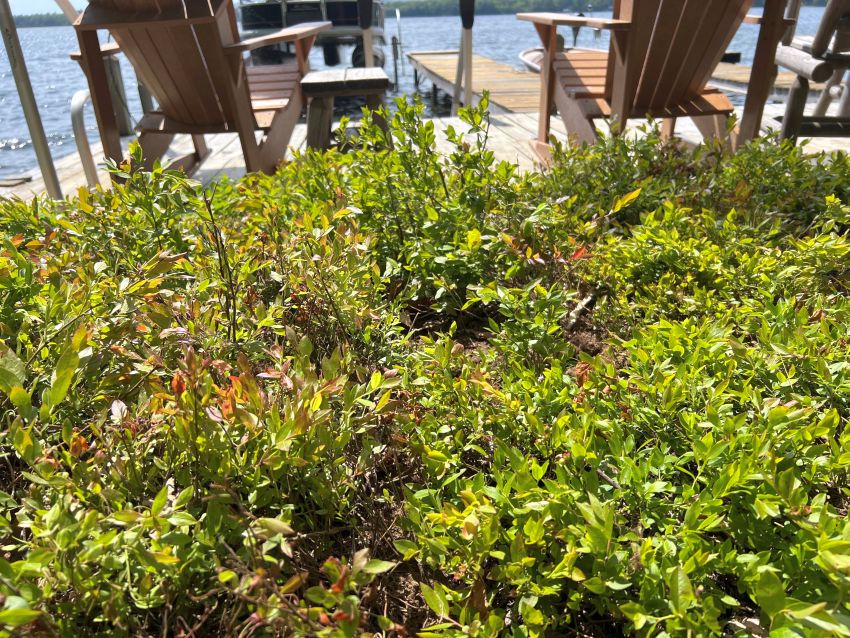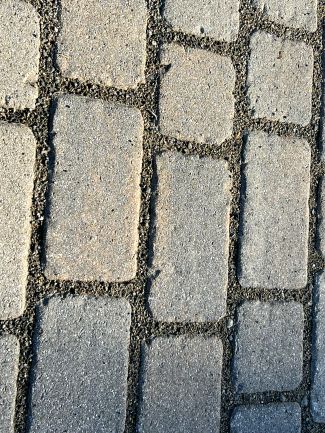
Best Practices to Control Erosion Into Lakes

Erosion control measures are sometimes referred to as best management practices, or BMPs. One of 7 Lakes Alliance’s major thrusts is encouraging and facilitating the installation of BMPs that mitigate stormwater runoff and erosion into streams and lakes.
Those measures are important to protecting and restoring the water quality of lakes and streams. Developed property, particularly construction that is not sustainable, is more prone to create runoff. Dirt carries phosphorus into a water body; phosphorus is a nutrient that feeds algae, degrading water quality.
All BMPs are good, says Stuart Cole, 7 Lakes’ erosion control project coordinator. Which BMPs are best, Stuart says, depends completely upon the circumstances of an individual property. When asked which BMPs are most common, he identified the following three without hesitation:
- Vegetative Buffers
-
The most effective BMPs, according to Stuart, are vegetative buffers — trees, shrubs, bushes and plants that anchor the soil and keep it from washing away. Most properties can benefit from more buffers, Stuart says. Trees canopies offer the added benefit of dispersing rainfall before it hits the ground, thus minimizing runoff.
Blueberry bushes are a common and effective BMP. Perhaps the gold standard of vegetative buffers is blueberry sod — the sort of which grows on Vienna Mountain and produces wild blueberries. Be forewarned: it’s expensive. One square foot of blueberry sod costs $6.25. So a 10-foot-by-10-foot section would cost $625.
- Defined Pathways
- Typically, people take the most direct path when walking between their camp and their dock. That foot traffic often wears a grassless dirt path straight down to the water. The better practice is to define a meandering path to the water using crushed stone or mulch. Again, the gold standard for mulch is erosion-control mulch, which is far coarser than the sort of mulch often used on playgrounds or in flowerbeds. But it does an excellent job of staying put and stymieing runoff.
- Defined Parking Areas
-
Erosion and runoff is far more likely to occur with a dirt parking area than with one whose edges are defined by boulders or railroad ties and in which the parking surface is covered by something other than dirt that is not completely impervious. A great example of a pervious parking area are the porous pavers at the 7 Lakes building at 137 Main Street in the Belgrade Lakes village. The pavers have spaces between them that allows rainfall to seep in, lessening runoff. Underlying geotextile fabric and crushed stone filter pollutants from the water.
Many people opt for bluestone, which creates runoff, but not as much as asphalt. Bluestone is definitely better than dirt.

7 Lakes’ LakeSmart program is a free and easy way to determine if any of these, or other, BMPs can help minimize runoff from a shoreland property.
Recommendations from a LakeSmart survey can often be installed by 7 Lakes’ Youth Conservation Corps for a minimal cost. (The property owner pays for the materials, though Stuart arranges for that, easing the burden for owners.) To schedule a survey or a YCC project, stuart.cole@7lakesalliance.org">email Stuart. We’d love to help you help the lakes by minimizing runoff and erosion from your property.
Anthony Wilson is the 7 Lakes Alliance’s communication director. You can write to him at anthony.wilson@7lakesalliance.org.
Download Full Newspaper: High Res | Low Res (Details…)
<— Previous Article • Summaries • Next Article —>
©2022 by Summertime in the Belgrades. All rights reserved.